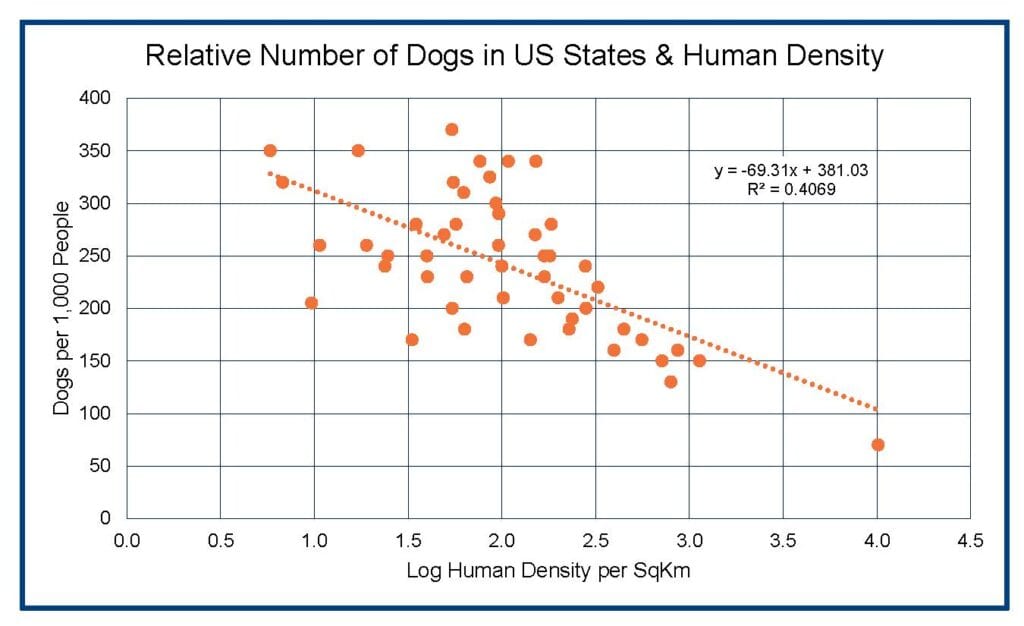
Nov 02, 2020 Counting Dogs
Data on dog numbers and dog well-being will be an important part of evaluating impact of different approaches to dog and human well-being in particular communities. The world currently has somewhere between 800 million and one billion domestic dogs. As such, they are the most common canid on the planet by at least two orders of magnitude (100-fold). Dogs are the earliest animal to have been domesticated and they have achieved their evolutionary success by hitching their wagon to humans. Recent research indicates that the domestic dog is particularly good at attending to and interpreting human expressions and emotions. Of the dogs in the world today, approximately 60% share human homes (mostly pets with varying degrees of attachment to their human families) while the remaining 40% live in human communities but on the street. There are very few dogs that survive and reproduce successfully away from humans.
One of the cornerstones of our Global Dog Campaign is a requirement that implementing partners collect data on the dog populations in their communities so that progress in ending dog homelessness and improving dog well-being can be tracked. Here are some tentative conclusions about the distribution of dogs across the globe and the welfare status of dogs in different places.
Where are the Dogs?
WellBeing International’s (WBI) website now has several pages dedicated to its Global Dog Campaign. One page includes a map of the world with data on the number of dogs in specific countries and estimates of how the total dog population is divided between pets (or confined dogs) and street dogs. If the reader mouses over the map and clicks on a specific country, it will pull up a light box with this data for most of the countries. The map includes data for a little less than half the countries, but the countries represent more than 80% of the current human population and about the same percentage of the total global dog population.
Selected Findings from the Scientific and “Grey” Literature on Dog Demographics and Well-being.
- The relative population of dogs (WBI uses the metric dogs per 1,000 people), appears to be remarkably stable over time. The relative number of dogs in the USA varies between 215 to 240 dogs per 1,000 people over the period from 1950 to 2020. In Western Europe, the relative number of dogs has been constant in most countries from 1980 to the present. There are countries where the dog population has changed. For example, the relative dog population in Japan tripled in the last part of the 20th century and pet dog populations have been growing rapidly in certain Asian countries (e.g. South Korea and China) in the last decade. But, in general, the relative dog population appears to be fairly stable over time. This means that the absolute dog population increases with human population growth. [See note at bottom for an explanation of the importance of using the relative number of dogs in one’s analysis.]
- Even though the relative population of dogs in the USA is fairly constant, there are still large (3-fold) differences in dog populations from one US state to another. A major factor influencing the variations in the number of dogs per 1,000 people appears to be human density. The chart below shows the relationship of the relative dog population with human density. This relationship is not unique to the USA. Similar inverse relationships between human density and the relative dog population have been observed in dog surveys from India, Pakistan, Mauritius and Afghanistan.

- There are relatively few street dogs in most High-Income Countries. In Low- and Middle-Income countries, street dogs are primarily observed in rural areas. These street dogs are not owned by particular households in the sense that pets are owned in Europe or North America, but most street dogs appear to be claimed by specific households. This claim involves some commitment to provide food (mostly household leftovers) on an irregular basis, but this resource is nevertheless important in sustaining street dog populations. The relative number of street dogs varies widely across the world from around 10-20 per 1,000 people in Indian cities to as many as 400 per 1,000 people in rural communities in South America and in Pacific Island nations.
- Street dog sterilization and vaccination projects have been associated with a decline in dog disease incidence (e.g. sterilized street dogs have lower rates of mange) but also a decline in the incidence of human rabies. For example, the human rabies case incidence has fallen to zero in the cities of Jaipur and Chennai in India following implementation of street dog sterilization and vaccination programs. In addition, the incidence of dog bites has fallen by two thirds over the 25-year period that the Help in Suffering organization in Jaipur has been engaged in its street dog sterilization and vaccination program. Data on the impact of sterilization and vaccination projects compared to projects that are limited to just vaccinating street dogs is badly needed to determine the benefits added by sterilization over and above those of vaccination alone.
[The importance of using a measure that tracks the relative number of dogs in a country can be explained by referring to reporting of Covid-19 cases in the current pandemic. Newspapers typically report either the absolute number of Covid-19 cases (the total number of cases) in a state or county or the relative rate of cases – usually as the number of cases reported per 100,000 people. The absolute number will usually be higher in states or counties with more people, but the relative rate of cases indicates how serious the pandemic is in a particular place. According to the New York Times (October 30, 2020), Oregon recorded 44,084 cases in the past seven days while North Dakota recorded 42,488 cases. But the rate of Covid cases in Oregon was only 10.1 per 100,000 people compared to North Dakota’s 113.9. The pandemic is currently eleven times more serious in North Dakota than in Oregon even though the total number of cases is about the same. Similarly, tracking the relative number of dogs in specific countries or states allows one to make important inferences about the tolerance of dogs in particular places and to analyze factors that influence dog population – e.g. human density in the chart above.]


